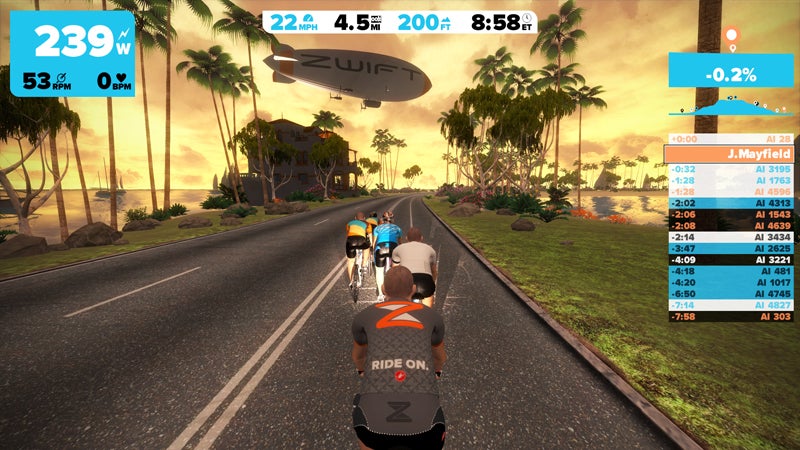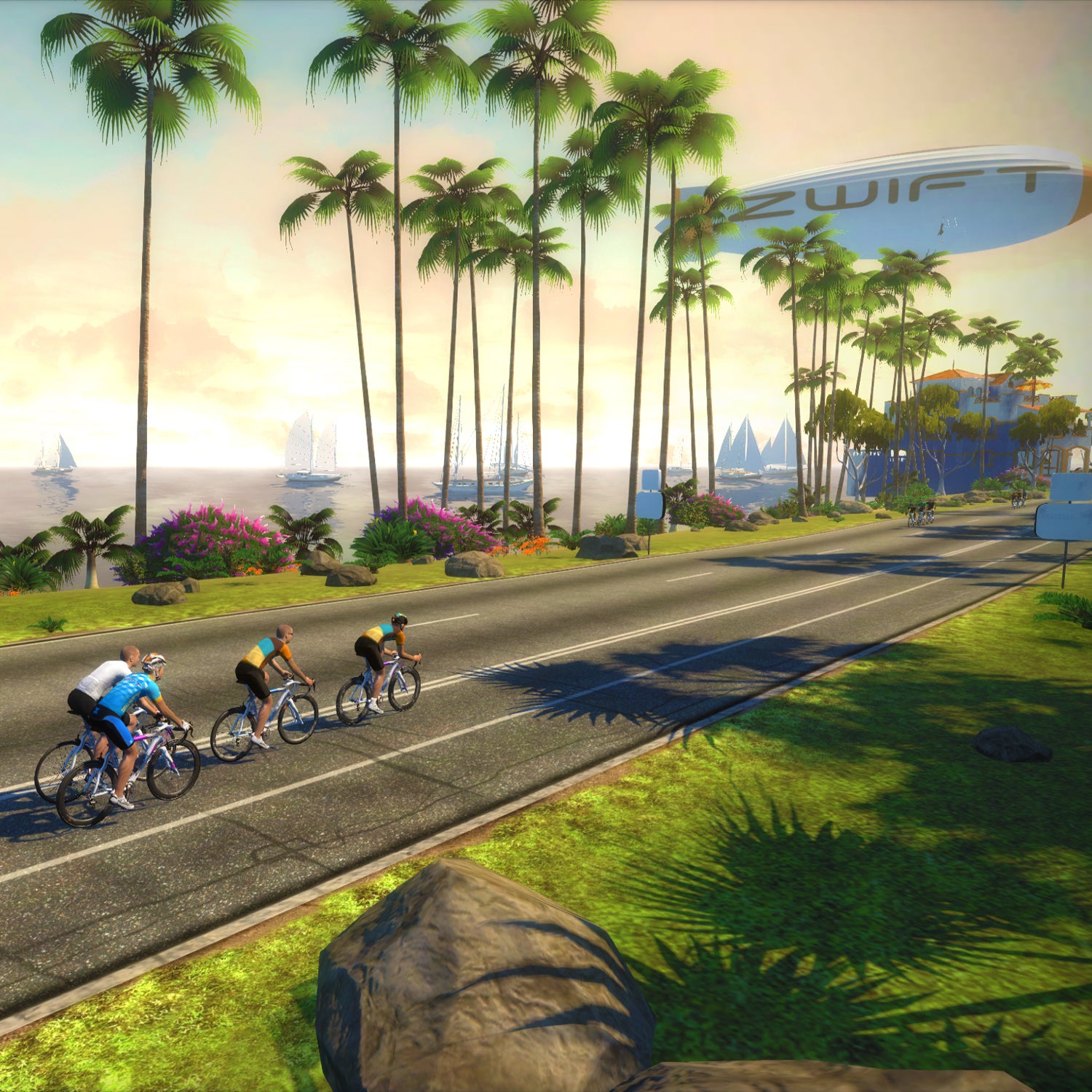If you’re a cyclist, you’ve doubtless endured the tedium of indoor riding through snowy winters—unless you live in Malibu.
For the rest of us, shorter days and nasty weather force our workouts indoors at least some of the time. But now a new platform offers something more enticing than long solo rides on an indoor trainer.
(not a piece of hardware) that lets you ride against anyone in the world from your home. The company's founders, who come from both cycling and computer-gaming backgrounds (they also have a little black-ops/DARPA mixed in there that they can’t talk about), wanted to create a riding experience that comes as close to reality as possible, right down to your kit.
Here’s how it works. Before starting a course, players can enter their bike model, create a virtual cycling kit, and add in their actual weight, age, and gender. This customized profile will be their avatar on the virtual roads of Zwift. Next, they pick a course (options include some of the world’s most popular Gran Fondo tracks like and ) and start pedaling.
At the Zwift launch I attended Tuesday in New York City, the platform reminded me of fully immersive auto-racing games like , complete with multiple “camera” angles, incredibly lifelike avatars, and rich, scenic landscapes. There are prizes (Tour de France-style KOM and green sprinter jerseys) and visual prompts (“Close the gap!”). And just like in real life, if you’re drafting behind someone, resistance decreases. Riders earn achievement credits, which beyond kudos (other riders will know you're a badass) could be redeemed in the real world as well. More on that in a bit.

The best part: Because the Zwift platform connects to a wide range of devices, you can use your own trainer (you’ll get the best results if it’s electronically controlled), a power meter (think PowerTap hub or Stages Cycling crank), and computer (PC or Mac). For $10 per month (plus the cost of an ANT+ receiver for your computer so it can sense power-meter data), you can compete against riders around the world. Note that if your trainer already captures watts you won't need a separate power-meter.
That last bit’s key. There are other virtual-reality training options out there, but they require specific hardware—and often need to be wired together to let you race against other people. Take BKool, which only works if you buy its trainer, and Tacx, which sells hardware that only works with its software. Both companies offer simulated indoor riding with scenic courses, players’ times, and a virtual peloton that appear on a TV or computer monitor. Both have a multiplayer element where you compete against others onscreen. Neither allow you to use your own equipment.
BKool even lets you upload your own GPS tracks so you can try to set a new PR on your favorite century or test your mettle on a local road-race course. The hills are virtual, but the trainer’s resistance ramps up automatically to simulate the climb. , a popular performance-oriented competitior allows you to create your own courses and program in intervals, but cannot connect you to a worldwide audience of riders.
With Zwift you don’t need to buy a $650 trainer or be in the same room as your competitors. Any trainer will work. However, electronic trainers are recommended. They can automatically ramp up resistance, making it easier to hit a wattage equivalent to a climb. We like , which will adjust resistance automatically based on terrain. that also works well with Zwift. With a manual trainer, you’ll have to crank resistance by shifting and hope your power simulates the extra effort for climbs or sprints.
Yes, you could theoretically ride in the Zwift environment with just a speed/cadence sensor, but having a trainer that reads feedback from Zwift and a power meter allows for more accurate simulation. Why? Zwift needs to measure your output, which equates to speed over virtual terrain. Without it, your virtual progress won’t be as accurate. (Riding on a mechanical trainer with a power meter will yield accurate data, but less realistic road feel than an electronic trainer.)
Zwift offers a curated environment with a finite number of courses. The key to the platform, its creators stress, is riding with other cyclists. You won’t (at least initially) be able to upload your own GPS tracks, a la BKool, and you won’t be able to ride alone.
The idea is to prevent you from entering a virtual riding world and finding nobody home. In theory, by limiting the course options, more cyclists will have to share the same space. Like entering a big Gran Fondo, there’s always someone riding at your level to draft behind.
There’s also a sound business strategy behind the decision to limit course options. Zwift wants to work with popular rides and races on a sponsorship model. The details of this are somewhat nebulous, but the idea is that event organizers would pay to have their courses uploaded to the platform. In this way avatar prizes and jerseys could be sponsored, and a points-achievement system might eventually include tangible prizes (real jerseys and gear), not just virtual bonuses.
There’s even a tentative deal to have your virtual times appear in Strava with some sort of indication that your KOM was on a trainer. We’ll see how controversial this turns out to be, as real-world KOMs and sprints include factors not encountered in the digital world (think cars and 15 mph headwinds). But and well in Strava, so virtual versus “actual” tallying is almost surely on its way.
Timing? Beta is going on now (register at ) and the full rollout is scheduled for around January 1, 2015.


